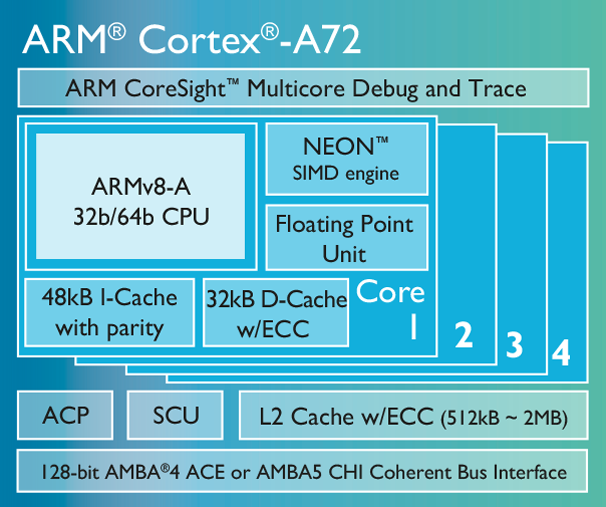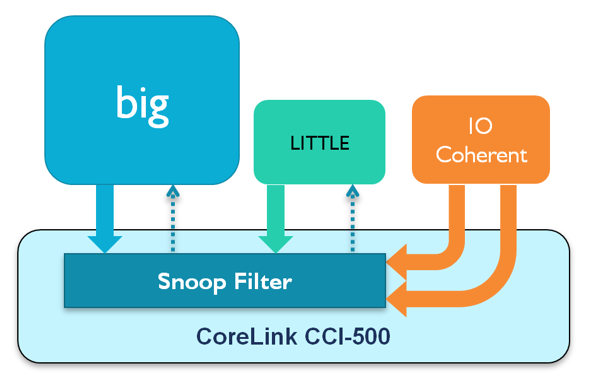ARM spoke about the processor, which will be the core of smartphones in 2016
New system on a chip supports 4K recording 120 fps
 2015 barely began, and we only had time to evaluate the performance of the Cortex-A57 core, and the British corporation ARM is already announcing the specifications of its future system on a chip. The 2.5-GHz Cortex A72 64-bit core will be based on the ARMv8-A architecture and the 14 nm / 16 nm FinFET + manufacturing process. The power of the new Mali-T880 graphics chip is enough for comfortable work with 4K content.
2015 barely began, and we only had time to evaluate the performance of the Cortex-A57 core, and the British corporation ARM is already announcing the specifications of its future system on a chip. The 2.5-GHz Cortex A72 64-bit core will be based on the ARMv8-A architecture and the 14 nm / 16 nm FinFET + manufacturing process. The power of the new Mali-T880 graphics chip is enough for comfortable work with 4K content. ARM is pleased to compare the new product with the chips of past years. Relative to the 28-nanometer Cortex-A15, which appeared at the end of 2012, the growth will be 3.5 times. Performing the A15 load, the A72 can spend 75% less energy. Compared to the Cortex A57 (Qualcomm Snapdragon 810, Samsung Exynos 5433), the new A72 is 1.9 times faster.

But no specific numbers from the benchmarks were mentioned, which is expected for such early announcements with vague promises. Unless it was said that there is enough power to record 4K video at 120 frames per second - today even top-end smartphones can hardly pull out 30. This is largely possible thanks to the new CCI-500 north bridge , whose peak throughput is twice as high as the predecessor CCI-400. In the big.LITTLE configuration, four Cortex-A53 cores and four productive Cortex-A57 cores can be combined. Cortex-A72 will also be possible to pair with the A53 using this technology, and according to ARM, this will reduce energy costs by 40-60%. The new Mali-T880 video processor is about 1.8 times


faster than the current Mali-T760. If the novelty fulfills the same load, then it is possible to spend 40% less energy. The Mali-T880 has native support for 10-bit YUV.
As you can see, ARM often compares energy efficiency, which is not surprising - over the past five years, the performance of smartphones has grown by 50 times, and the batteries showed only a two- fold increase in capacity. Due to the growing resolution and “gluttony” of screens, you have to go to various tricks, saving every milliwatt spent. As a result, the current process technology of AMD desktop processors - 28 nm - is twice as large as that of future mobile chips.
ARM reports that it has already signed agreements with about a dozen partners, including Rockchip, HiSilicon, Cadence, Synopsys and MediaTek. The current version of Android 5.0 Lollipop can already take full advantage of the 64-bit ARMv8-A, but the Cortex A72 will not appear in flagship devices until next year.
